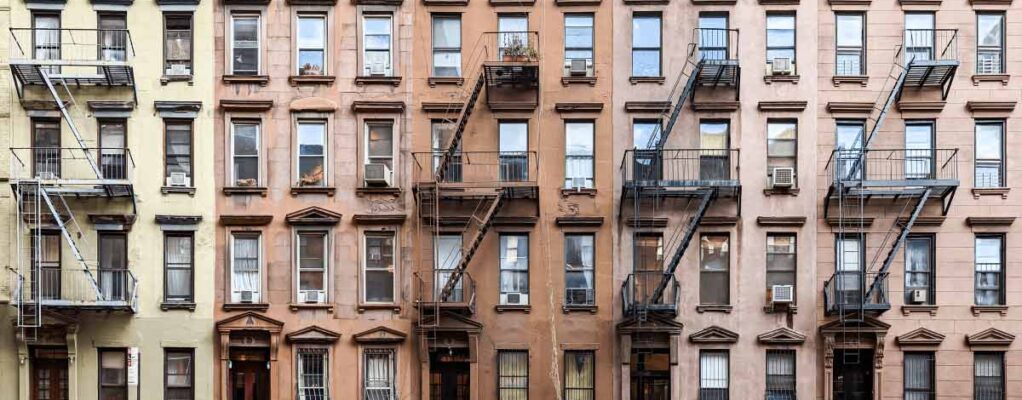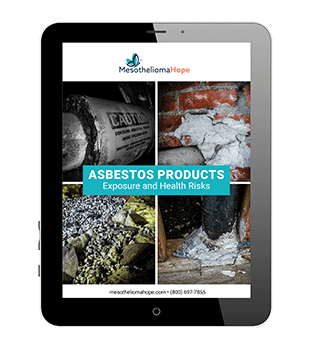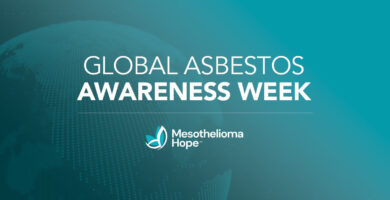Before the 1980s, asbestos, a cancer-causing mineral, was used extensively in the construction industry. While the substance is now banned in new construction, many older buildings and rental properties still contain the lethal substance.
Learn how to tell if your rental has asbestos and what your landlord should do to protect you.
Is There Asbestos in My Rental Property?
Asbestos fibers are tiny and cannot be seen by the naked eye. For this reason, it can be challenging to know which products contain asbestos.
Asbestos used to be found in:
- Ceiling and floor tiles
- Cement
- Drywall
- Electrical wire casing
- Insulation materials
- Paint
- Plaster
- Roofing materials
More than likely, if your rental property was built before the 1980s, it was constructed using asbestos-containing materials like those listed above.
What to Do If You Suspect Asbestos
Asbestos products are generally safe until they’re disturbed, damaged, or removed unsafely. When this happens, microscopic asbestos fibers can be released into the air and inhaled or swallowed.
Once asbestos fibers are in the body, they remain there for decades, causing irreversible damage and increasing the risk of mesothelioma, a rare and aggressive cancer.
If you suspect something in your home contains asbestos, do not touch, scrape, or otherwise disturb the item. Instead, look at the material for signs of wear and tear or other damage.
If it looks like the material is breaking or coming apart, you should contact your landlord immediately, as you might be at risk of asbestos exposure.
What Is My Landlord’s Responsibility?
Landlords are responsible for complying with housing codes to provide a safe and habitable environment for their renters. Each state and county has different housing codes and laws, so some landlords might not be legally required to inform tenants of the presence of asbestos.
However, the Occupational Safety and Health Administration (OSHA) outlines federal requirements for landlords of older buildings.
OSHA requires all owners of buildings constructed before 1981 to locate any existing asbestos and follow certain safety guidelines when doing renovations or repairs.
If you believe there are damaged asbestos-containing materials in your rental and it was built before 1981, your landlord is required to work with a licensed asbestos professional to test the product and determine if it needs to be removed.
Learn more about asbestos exposure risks and how to protect your family in our Free Asbestos Products Guide.
Asbestos Abatement in Rental Properties
If the asbestos is considered unsafe, asbestos abatement will need to begin. Removing asbestos is a long and carefully controlled process to keep workers, renters, and all others in the building safe from exposure.
One safety measure is sealing air ducts, windows, and doors with thick plastic to keep asbestos fibers from traveling to other areas.
Landlords of older buildings may choose to remove asbestos in one long project, or slowly work room by room.
Depending on how much asbestos is in your rental, you may need to work with your landlord to find temporary accommodations until the abatement is complete.
Once the removal is finished, the area must be carefully cleaned before you can safely return.
You can ask your landlord to provide documentation from the abatement professionals showing proof of their work and if any other asbestos materials remain that may need to be monitored.
When to Find an Asbestos Lawyer
Landlords who fail to take action for damaged asbestos place the health of their tenants at risk.
Renters may not even know they were exposed to asbestos until decades later when symptoms of mesothelioma and other asbestos-related diseases appear.
If you’ve developed an asbestos-related disease from asbestos exposure in a rental property, you may be eligible for financial compensation.
Mesothelioma Hope can connect you with trusted asbestos lawyers who can fight for compensation on your behalf. Contact us at (866) 608-8933 or get a Free Case Review now.











